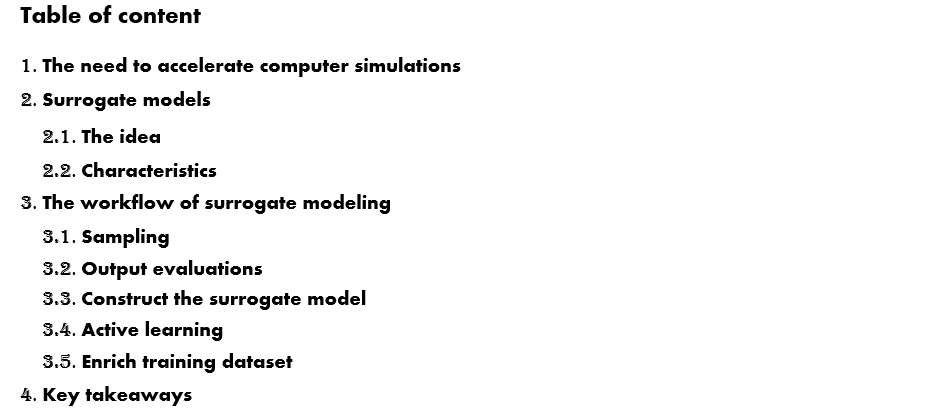In engineering, product design relies heavily on a thorough analysis of the product performance under various design parameters. Those analyses are mostly carried out via high-fidelity, time-consuming computer simulations.
To push the product to the market faster, accelerating these simulation-based analyses is the key. Toward that end, a data-driven approach called surrogate modeling is gaining in popularity recently in various engineering domains.
In part I of this blog, we will focus on the fundamentals of this method by going through the following aspects:
- Motivation: why do we need a method to accelerate computer simulations?
- Solution: how is surrogate modeling helping the situation?
- Details: how to actually apply surrogate modeling?
Key takeaways of part I are listed at the end of this article.
In part II, we will work through a case study to demonstrate the key steps in practical surrogate modeling.
In part III, we will briefly talk about some advanced concepts to further enhance surrogate modeling capability.

#statistics #engineering #machine-learning #data-science #modeling